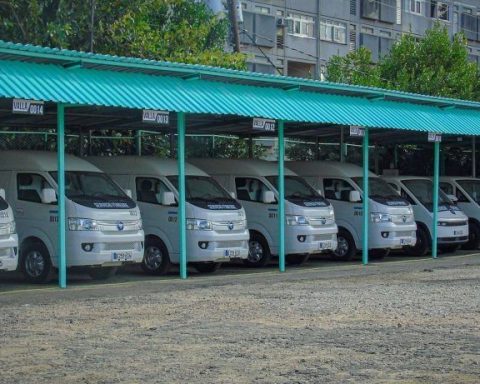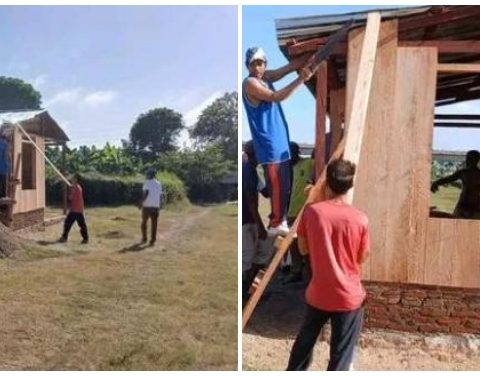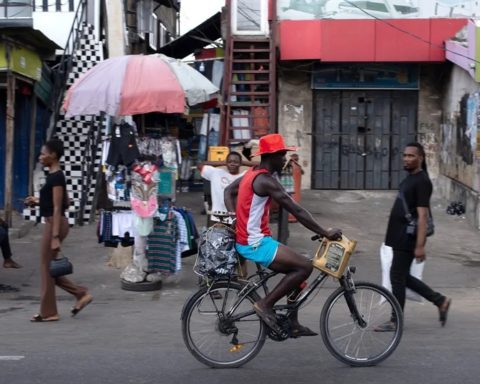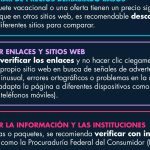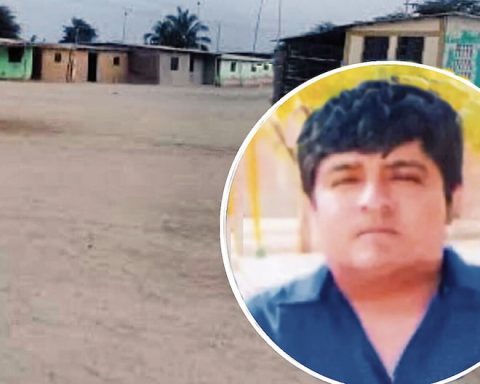CDMX, Mexico. – On August 17, 2017, Yulier Rodríguez Pérez (Yulier P.) was detained by the Police while painting graffiti on ruined walls in Havana. After 48 hours in prison and tormented by continuous threats, the artist agreed to sign a paper that the Political Police had drawn up, if they released him with that. In the document he promised to erase each of the graffiti that he had begun to leave in the landslides that saturate Havana since 2014. They gave him seven days to atone for his artistic sins and the 200 murals to vanish. Otherwise, he would go to prison for “abuse of social property.”
The old Cuban Criminal Code, in its articles 243 and 339, punished mistreatment or misuse of public spaces, which are actually government property, like almost everything on the Island, with imprisonment of up to five years. If something was to be painted on the destroyed walls of the city would be the ideological slogans and the portraits of the leaders of the Revolution. Yulier assures that no enthusiast who dares to draw what is politically correct ends up in jail. On the other hand, he does not have the same luck because his lines do not outline men with beards and olive-green suits, or phrases from the gallery.
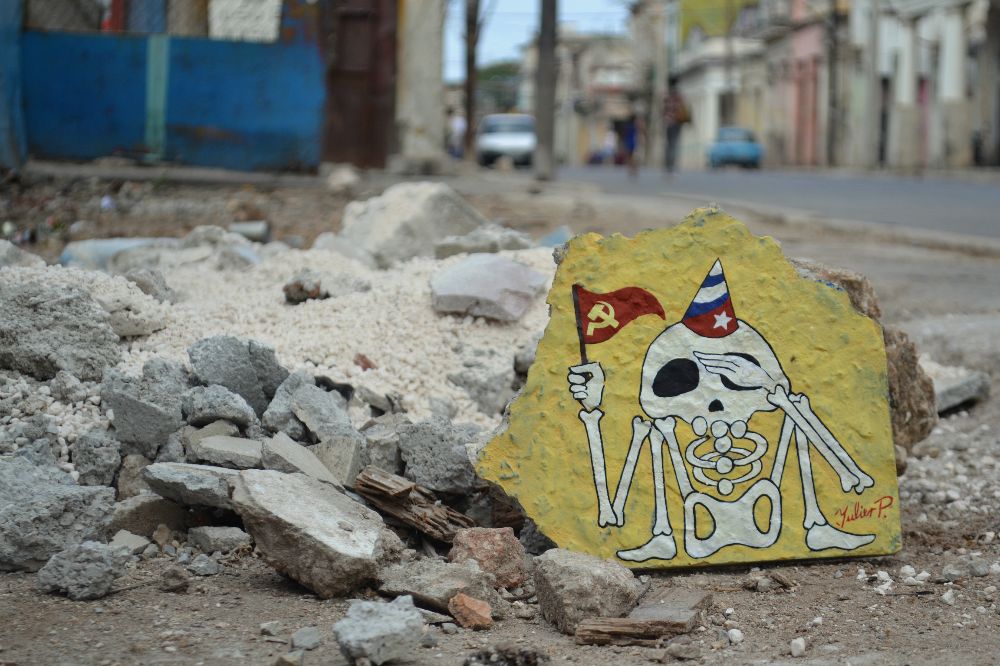
“That is where they contradict themselves, because what they punish is not intervening in a wall, but drawing something that questions them, even if it is implicit,” says the artist.
Yulier P. does not really paint human figures. His creatures are almost always limbless, earless, amorphous beings. Melancholic or terrified specters with skinny little bodies and deep circles under their eyes that roam the chipped walls, or what is left of them. They are children of disaster and chaos. Yulier P. was leaving around the city a portrait of what sadness and despair look like in a country that is reduced to that every day.
Yulier P., the graffiti artist of despair
Yulier, 33, tried to study at the San Alejandro National Academy of Fine Arts but failed the admission exams. Although he took some classes independently and at the Art Instructors School (EIA), his training was and still is basically self-taught.
During his adolescence, walking through Old Havana, he found by chance the “José Martí” Community Project. It was a space for artists without academic training to work and show their works. He began to attend more and more frequently and, at the age of 16, he sold his first painting for 15 CUC. Yulier felt that he was taking home a fortune. Later he continued painting on canvas by vocation and as a subsistence, until in 2014 a friend encouraged him to do graffiti. He did not like the first thing he painted very much, nor does it resemble the style that he would later define it; but he did, he was hooked on that energy that painting in the streets gave him, the freedom that he felt. Above all, he was attracted by the fact that his art would be seen by every passerby who passed by.

From then on he did not stop painting on the old walls of the city, although his name became better known around 2016. Already then he had attracted the attention of the independent press with his melancholic drawings.
That visibility brought him to the United States in 2017, invited as an artist. It was a brief trip to New York from which Yulier returned wanting to conquer the world and grow as a professional in Cuba. He could have stayed, but he thought there would be other opportunities to think it over and decided to come back. “In Cuba we have never been well, but six years ago we were a little better. Now it is the apocalypse of communism, ”he reflects.
With each interview and report that the media published about him, Yulier became more famous and followed, but he was also targeted by the Political Police.

“I don’t come from a revolutionary family. I always knew something was wrong with this regime, but you live in fear in Cuba, afraid to even think. Then as one grows up and you get to know him, you understand that you are suffering from a dictatorship. They themselves opened my eyes. With the repression they turned me into a public dissident with a frontal stance towards the regime, ”he says.
The cost of his art and speech have been years of threats, surveillance, arbitrary arrests, spending nights in a cell with people detained for common crimes. For Yulier, it is common for him to be kidnapped on the street or to enter his home without a warrant and be taken into custody, or for an agent to arrive one day and warn him that he cannot leave the house because some problematic anniversary for the Government is being commemorated. The regime has made Pérez’s aerosol paint an enemy to be eradicated.
“This last year, after the protests and with the new Penal Code The repression has become harsher. They are more fierce with the dissidents and with the population in general. Cuba is experiencing the worst social, political and economic period in its history. The level of violence and alienation that exists in the streets, the level of impunity with which the dictatorship represses and nothing happens, are appalling. Living in Cuba today is like living in hell.”

On February 15, Pérez suffered his last arrest at the hands of State Security. The artist reached the Aguilera police unit in the Havana municipality of Diez de Octubre, where they had summoned his friend, the activist Adel Bonne Gamboa. The graffiti artist took the phone from him and from the opposite sidewalk took a photo of Adel walking up the stairs of the unit. It was 10:00 in the morning. That was enough for them to also lock him up until 6:00 p.m. and threaten him with confiscating his phone, even though he had not violated any rule.
Every time he is arrested, Yulier fears that he will be locked up indefinitely. He confesses that he lives in fear of being mugged while walking the streets or that the regime authorities one day decide to arrest him for being a dissident artist (the cases of Maykel Osorbo and Luis Manuel Otero, both imprisoned since 2021, come to mind ).
“The fault of what we suffer is first of the Cuban society for living in fear and without acting. But there is also a responsibility of the international community. On the one hand, they have a pro-human rights discourse, but they play along with a dictatorship that violates them and give them resources to continue destroying us.”
The sadness is still there
Since 2017 Yulier P. has not intervened in the city walls. He has redefined his work and is currently working on a series that he has named “Regalos”. They are small concrete pieces where he sketches the melancholic survivors of him.

Despite pressure from the Political Police, he never erased his drawings as they demanded. He believes that the visibility that the media and human rights organizations gave to his case influenced the regime to set him free. Even so, only two or three of the 200 drawings remain. The most visible were covered by the Government. Others were removed by religious groups who thought that the young man painted the devil, when he really portrayed his hostages.
The rest was taken care of by the constant deterioration of Havana. The walls ended up collapsing and buried with them the sad creatures that lived there.
